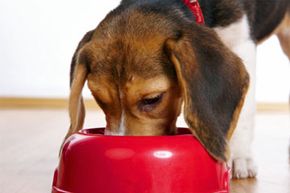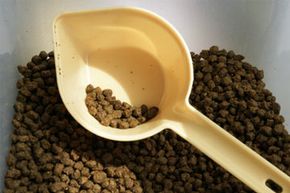Anyone even remotely health-conscious -- or heck, anyone who watches TV or reads health ads in magazines, for that matter -- is likely aware of the benefits of consuming omega fatty acids. But it's not just those of us walking around on two legs that can benefit. They can also be helpful for Fido, Lassie and other dogs as well -- and for many of the same reasons they're good for people; they affect everything from inflammation pathways to the moods and behaviors of our four-legged friends [source: Benson].
A little science is helpful in understanding exactly what omega fatty acids are and what types can have an impact in a dog's diet. According to Dr. Jules Benson, a vice president of veterinary services at the insurance company Petplan, omega fatty acids are polyunsaturated fatty acids, or PUFAs, that have double bonds at specific locations in their molecular structure -- the locations of those bonds differentiate the two most important health-related fatty acids, omega-3 and omega-6. "Specifically, omega-3 fatty acids have a double bond at the third carbon from the methyl group, and omega-6 fatty acids have a double bond at the sixth carbon from the methyl group," says Benson.
Advertisement
Omega-3 and omega-6 are both essential fatty acids, which means exactly what it sounds like it means: They're required in dogs' diets -- just like humans' -- for good health. Why? Omega-3 fatty acids are known to have anti-inflammatory benefits, which can be especially helpful for older dogs experiencing joint pain and arthritis [source: Benson]. Omega-3s can also be beneficial in protecting against life-threatening kidney and heart diseases, as well as cancer.
Omega-6 fatty acids, on the other hand, can cause or modulate inflammation, which means that they can be something of a double-edged sword. Not only can they prevent some of the health problems that come from swelling, too many omega-6 fatty acids can prompt inflammation.
We'll talk about exactly where dogs get their omega fatty acids next.
Advertisement



